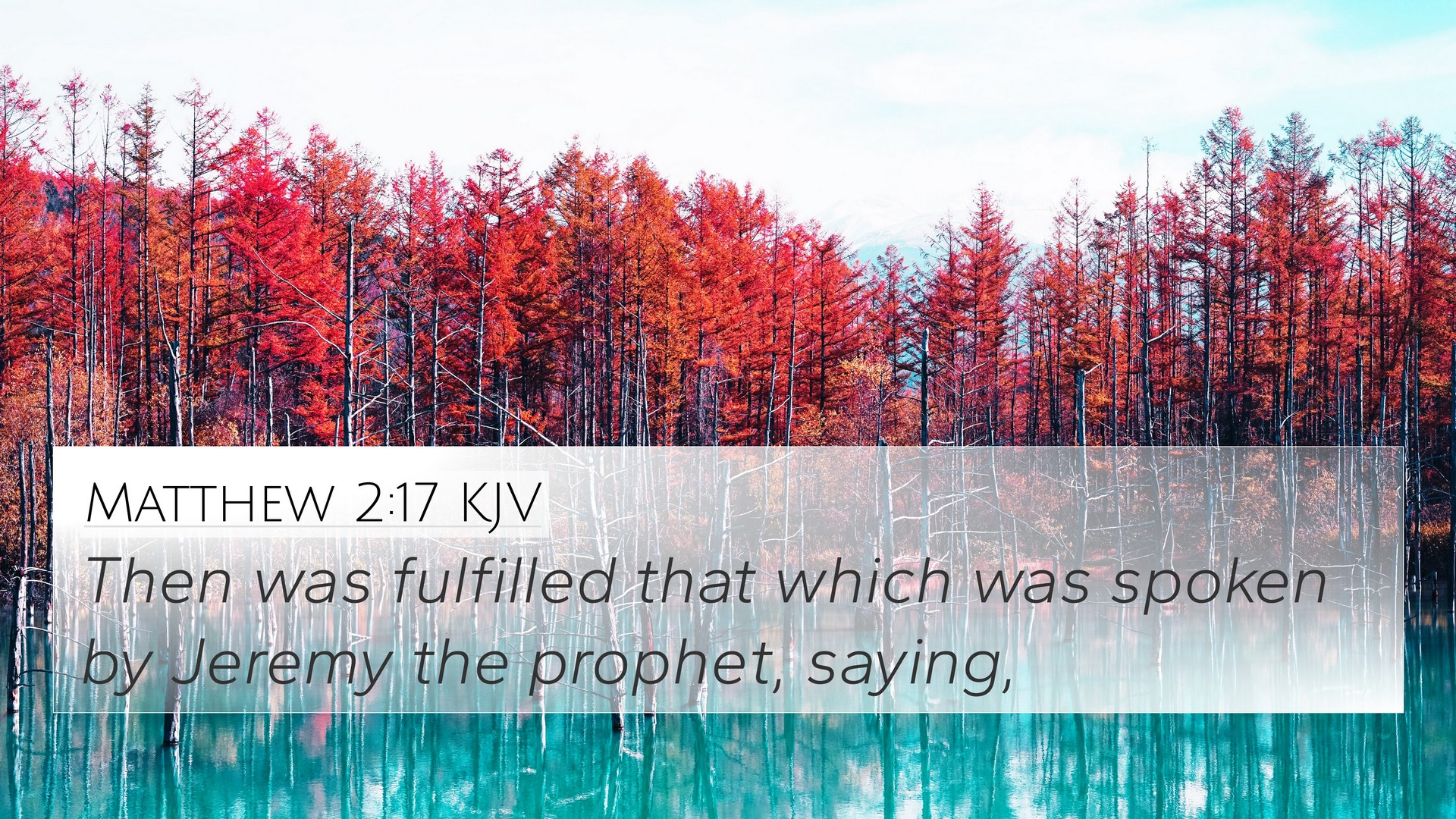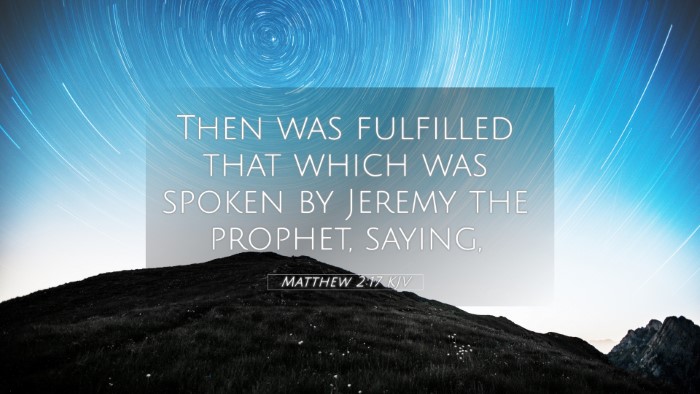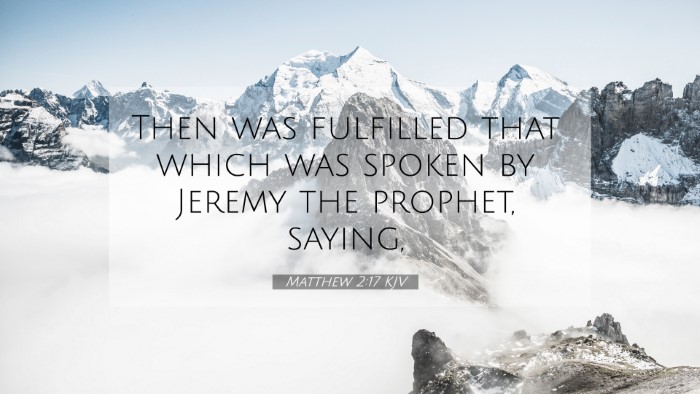Understanding Matthew 2:17: A Combined Commentary
Matthew 2:17 states: "Then was fulfilled that which was spoken by Jeremy the prophet, saying," This verse highlights the fulfillment of prophetic scripture, indicating the tragic yet significant event of King Herod's massacre of infants in Bethlehem. In exploring the meanings, commentaries from well-regarded sources such as Matthew Henry, Albert Barnes, and Adam Clarke provide profound insights that deepen our understanding of this passage.
Context of Matthew 2:17
This verse occurs in the narrative of the visit of the Magi and the subsequent flight of Joseph, Mary, and Jesus to Egypt. The event reflects the dire circumstances surrounding the birth of Christ and showcases the opposition He faced even as an infant.
Commentary Insights
- Matthew Henry: Henry interprets this passage as a demonstration of God's sovereignty over history. He emphasizes that divine plans often unfold amidst human violence and opposition. The massacre serves as a grim reminder of evil’s presence in the world, opposing God’s redemptive work.
- Albert Barnes: Barnes points out that the prophecy from Jeremiah, often viewed in its original context as pertaining to the exile of Israel, finds a new application in the New Testament. The lamentation of Rachel weeping for her children symbolizes the grief of the mothers in Bethlehem, linking the sorrow of the past with the present tragedy.
- Adam Clarke: Clarke elaborates on the messianic implications, noting how this fulfillment underscores Jesus' identity as the promised Messiah. He highlights the importance of prophecy in confirming Jesus’ divine mission and the necessity of cross-references to fully appreciate the scriptural narrative.
Cross-References to Matthew 2:17
Matthew 2:17 is intricately linked to several key verses that enhance our understanding:
- Jeremiah 31:15: This passage speaks of Rachel weeping for her children, underscoring the pain of loss.
- Exodus 1:22: The command of Pharaoh to kill Hebrew male infants parallels Herod’s actions.
- Hosea 11:1: "Out of Egypt have I called my son," connects Jesus’ early life with prophetic endorsement.
- Matthew 1:23: The prophecy of a virgin birth anticipates waves of conflict surrounding Jesus' entrance into the world.
- Luke 2:34-35: Simeon’s revelation that Jesus is destined for the fall and rise of many echoes the division Jesus would cause.
- Isaiah 53:3: The suffering servant theme resonates with Jesus' early trials and tribulations.
- Revelation 12:4: This verse metaphorically depicts Herod as a dragon, intent on devouring Christ.
Thematic Connections and Comparative Analysis
The themes of sorrow, prophecy fulfillment, and divine protection encapsulated in Matthew 2:17 span across the entirety of scripture. The interplay of loss and hope informs various narratives within both the Old and New Testaments. Identifying these themes through tools such as a Bible concordance or Bible cross-reference guide empowers believers to explore connections deeply.
Tools for Bible Cross-Referencing
To enhance your study of biblical texts, consider utilizing:
- Bible concordance: A resource for finding key terms and their occurrences.
- Bible cross-reference guide: Identify connected verses that expound on similar themes.
- Bible reference resources: Comprehensive materials that provide context and background for various passages.
Conclusion
Matthew 2:17 encapsulates a moment of profound sorrow within the broader narrative of God’s redemptive plan. The connection to prophetic texts establishes an inter-Biblical dialogue that invites deep reflection on God's sovereignty. By engaging through cross-referencing biblical texts, believers can uncover the rich tapestry of scripture that speaks to both the tragedy and significance of Jesus' life and mission.
Further Study Opportunities
For those looking to explore further:
- How to find cross-references in the Bible effectively.
- Identifying connections between Old and New Testament scriptures.
- Cross-referenced themes in the Bible related to specific passages.


